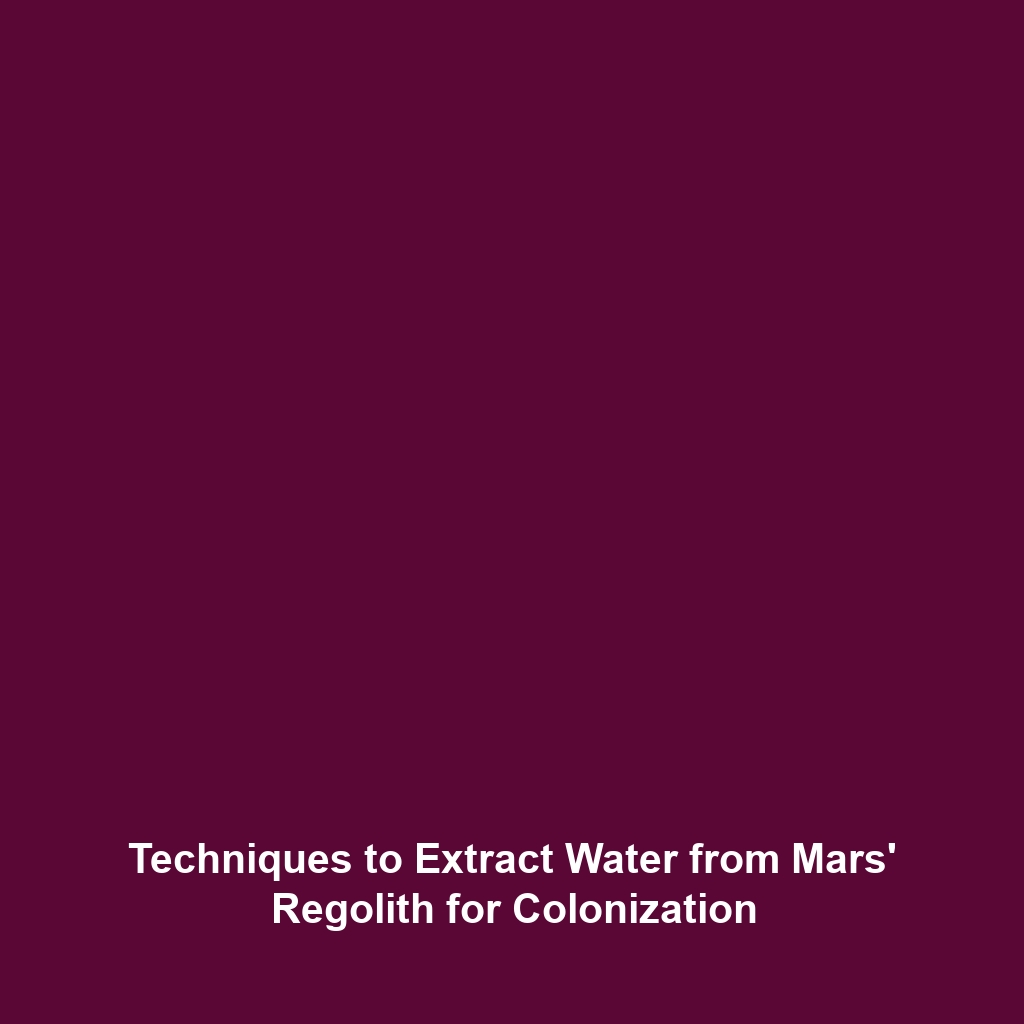Ice Deposits: Mapping and Accessing Ice Reserves on Mars
Introduction
The quest for colonizing Mars has intensified researchers’ focus on ice deposits on the Red Planet. Understanding and mapping these ice reserves is critical, as they could provide essential resources for future human habitation. The significance of this endeavor extends beyond scientific inquiry; it holds keys to sustainable colonization, resource utilization, and the broader ambition of establishing a human presence beyond Earth. This article delves into the intricacies of mapping and accessing ice reserves on Mars, underscoring its relevance to colonization efforts.
Key Concepts
Understanding Ice Deposits
Ice deposits on Mars are primarily found in polar ice caps and subsurface regions. Utilizing ground-penetrating radar and satellite imaging helps researchers identify the location and volume of these frozen resources. Several significant concepts emerge when studying ice deposits:
- Location Mapping: Advanced technologies enable precise mapping of ice reserves, revealing critical data for potential water extraction.
- Resource Potential: Ice deposits could serve as a vital water source for astronauts, reducing the need to transport resources from Earth.
- Climate Implications: Studying these deposits helps scientists understand Martian climate history and environmental conditions conducive to future colonization.
Applications and Real-World Uses
The exploration of ice deposits is not merely theoretical; it has significant real-world applications for colonizing Mars. Here are several practical uses:
- Water Supply: Accessing ice reserves can provide water necessary for human survival, agriculture, and life support systems.
- Fuel Production: Water can be split into hydrogen and oxygen, creating rocket fuel for return missions to Earth and further exploration.
- Scientific Research: Ice samples can yield information about Mars’ geology and potential for past life, which is crucial for understanding our universe.
Current Challenges
Despite the advancements in mapping ice deposits, several challenges remain in utilizing these resources effectively:
- Accessibility: Many ice reserves are buried beneath layers of regolith, making extraction technologically demanding.
- Technological Limitations: Current tools and methods may not be sufficient for efficiently accessing large ice deposits.
- Environmental Concerns: Disturbing Martian ice deposits could have unforeseen climatic repercussions on the planet.
Future Research and Innovations
Innovations in space exploration technology are paramount to improving our understanding of ice deposits. Future research may focus on:
- Advanced Robotics: Developing autonomous robots capable of drilling and extracting ice with minimal human oversight.
- Remote Sensing Technology: Enhanced imaging and mapping technologies that provide real-time data on ice reserves.
- In-Situ Resource Utilization (ISRU): Exploring methods to convert Martian ice into usable water and oxygen on-site.
Conclusion
The study of ice deposits on Mars is indispensable for the broader goal of colonizing the planet. Their potential as a resource for water, fuel, and scientific inquiry cannot be overstated. As research progresses, continued focus on technological innovations and solutions to inherent challenges will enhance our ability to map and access these vital resources. To learn more about colonization efforts on Mars and the utilization of extraterrestrial resources, explore our related articles.

